

The beauty of the Sardinian beaches is known throughout the world and needs no introduction. Ichnusa, as Sardinia was called in ancient Greek, is the second-largest island in the Mediterranean after Sicily. The Sardinian coast has almost 200 km of beaches, cliffs, hidden coves and rias.
We suggest here an itinerary that starts from the south-east coast of Sardinia and will take you to Caprera, then to the island of La Maddalena, the island of Spargi and the northernmost islands of Budelli, Razzoli and Santa Maria. Skipper and Maddalena native Paolo Traverso helped us with the article you're about to read. With a wealth of nautical miles on his shoulders in northern Sardinia, he's shared some valuable navigation tips (and more) with visiting La Maddalena. You won't miss the most fascinating pearls onboard your sailboat or catamaran.
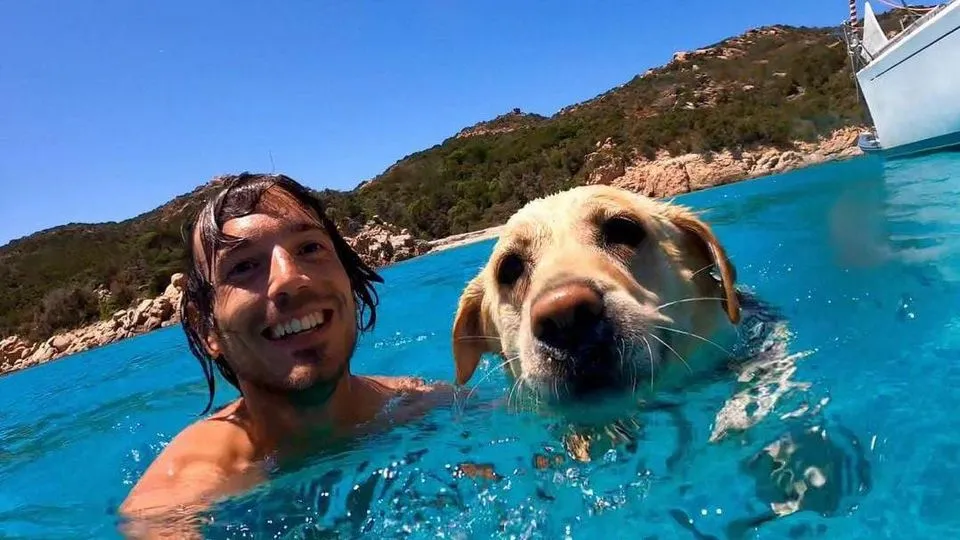
Paolo and his inseparable labrador, Artemide (source: Paolo Traverso)
There are two main ports from which you can set sail for la Maddalena Archipelago: Portisco and Cannigione. Portisco is located a little to the southeast of la Maddalena National Park. Still, from here, you will be able to follow a beautiful sailing itinerary which, although slightly further away, will allow you to reach the most beautiful parts of the Archipelago, passing through Soffi and Mortorio Island (about 3.2 NM from Portisco). Cannigione is closer to the Archipelago, 4 NM from Caprera, and is ideal if you want to spend more time exploring the islands to the north in a seven-day itinerary and if you want to go as far as Budelli and Santa Maria. In both cases, we will share with you, with the help of Paolo's advice, the most spectacular anchorage points along with your sailing. In both cases, you will discover true gems of these areas, discovering them from the magnificent point of view of the boat.
Starting your trip from Portisco towards La Maddalena, you will usually sail between the islands of Soffi and Mortorio, which, despite their distance from La Maddalena National Park, are part of it.
The real point of access to the Archipelago is the passage of the Bisce, between Capo Ferro and the island of the Bisce. You can sail along the internal part of the passage or external. Obviously, this will depend on the weather conditions you are sailing.
These islands, together with Li Nibani, offer lovely views. I want to observe one important thing here: these islands are an integral reserve and you're not allowed to sail around them. You can therefore sail along them to admire their beauty.
Once you have passed through the passage, the first larger and partly inhabited island you'll encounter is Caprera. The first natural shelter when entering La Maddalena, even in the event of easterly winds.
Sailing northwards along the east coast of Sardinia, one is immediately captivated by the scent and charm of a breathtakingly beautiful, still unspoilt nature. Right at the north-eastern end is a pearl of rare beauty, the La Maddalena Archipelago.
The Archipelago was recognised as the first National Park in Sardinia in 1994. With over 11,000 inhabitants, La Maddalena is also the only one included in a single municipality.
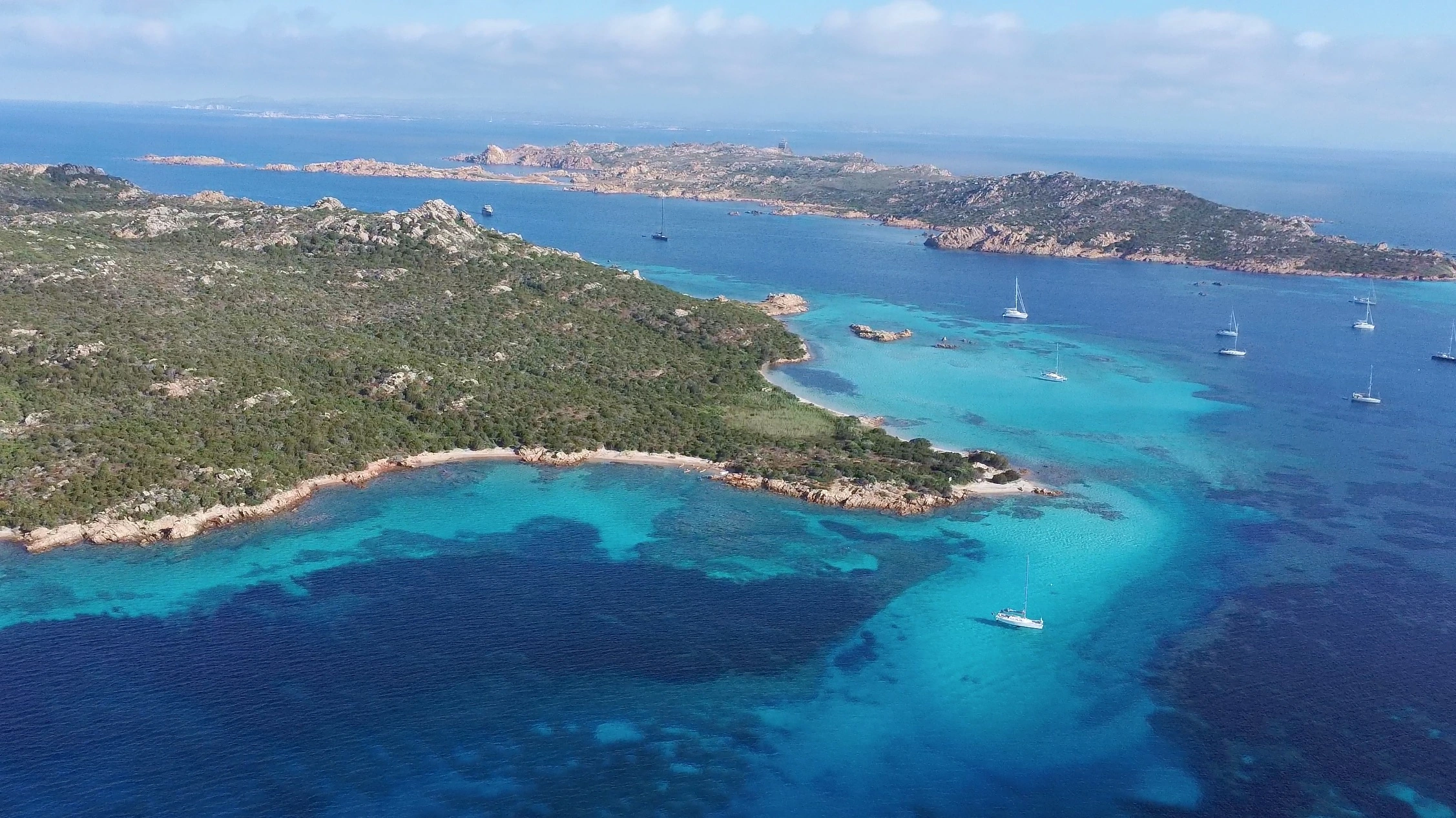
Aerial of la Maddalena Archipelago (source: Paolo Traverso)
With more than 180 km of coastline and 5,000 hectares of granite and Mediterranean scrub surrounded by 15,000 hectares of crystal-clear sea, there are seven 'major' islands part of the Archipelago: La Maddalena, where you'll find the main town, Caprera, Santo Stefano, Spargi, Budelli, Razzoli and Santa Maria, but also includes a vast number of smaller islets and rocks within its boundaries.
The park groups the Archipelago into zones to better safeguard the ecosystem: you're not allowed to transit in some of these. Rules can vary and are updated yearly, so I recommend checking that you are not travelling through forbidden zones. Penalties can be hefty.
The main islands are very close to each other. The Archipelago is particularly suited to be explored on a boat, to enjoy its beauty fully and admire even the otherwise inaccessible islands.
The island is connected to the island of La Maddalena by a fixed bridge built over the Passo della Moneta; unfortunately, the height of the bridge makes it impassable for sailing boats.
One of the first bays you come across as you head towards the island of La Maddalena, sheltered from practically all winds except the Ostro, is Porto Palma, a beautiful inlet on the southern side of the island, home to the Caprera Sailing Centre. It has a seabed ranging from one metre to 15 metres, there are free buoys and the Rada is allowed. The seabed offers good hold, and the natural protection offered by the bay is generally remarkable and very characteristic.
Remember that it is absolutely forbidden and inadvisable to bottom the Posidonia Oceanica: this is a protected species. It is an easily recognisable marine plant usually living in all the waters of the area. It has the important purpose of oxygenating the sea and being a very bad bottom for holding anchors. You should, therefore, always pay the utmost attention.
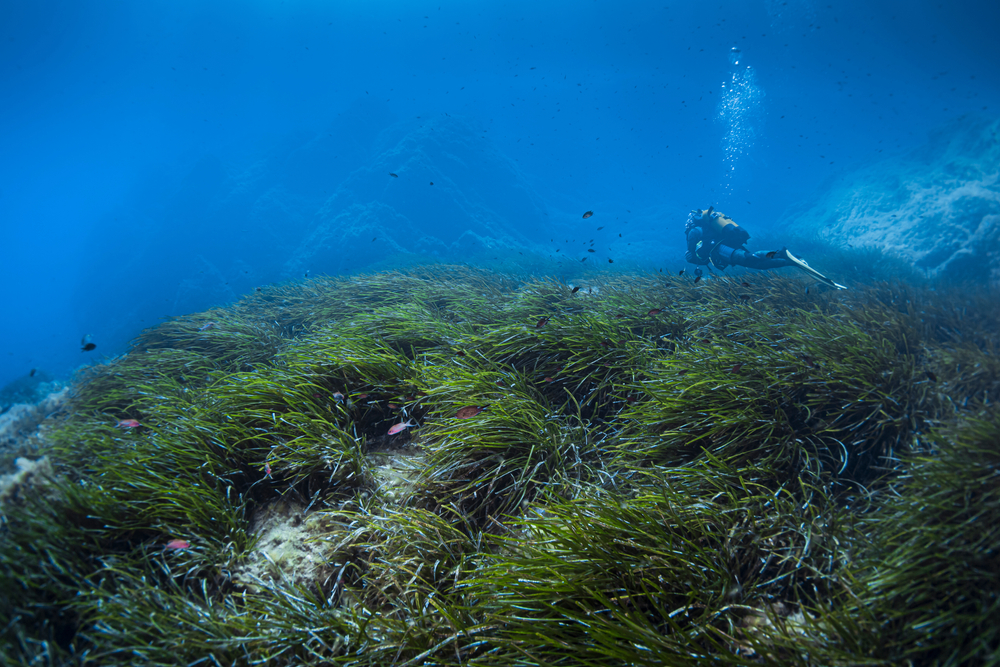
Seagrass-Posidonie (Posidonia oceanica) of mediterranean sea
In the bay of Porto Palma, it is not advisable to get too close to the docks reserved for the sailing centre because of the intense activity that takes place near their buoys to avoid creating problems for the students.
The island is home to a vast number of bays and inlets, and Cala Coticcio, which can only be seen from the sea at this time, is undoubtedly worth mentioning. Also known as Tahiti, with its turquoise-coloured sea, it is a tiny beach on the east side of the island that is worth seeing. It does not offer much protection from the east but is well protected from the west winds. Beware of wind turns when you are at anchor as there are orographic obstacles just behind the bay, including Monte Tejalone, the highest mountain on Caprera, worth a trek if you're into that!
I'd also like to point out some of the other most beautiful bays on the island, Cala Caprese, known as "due Mari" for the locals, Cala Brigantina, and Cala Napoletana, which is well protected from the sirocco. Generally speaking, there are fantastic little beaches and coves all along the coast. The only problem is that the shallows below the coast are often not marked, so proceed with care, especially when you get close to the mainland.
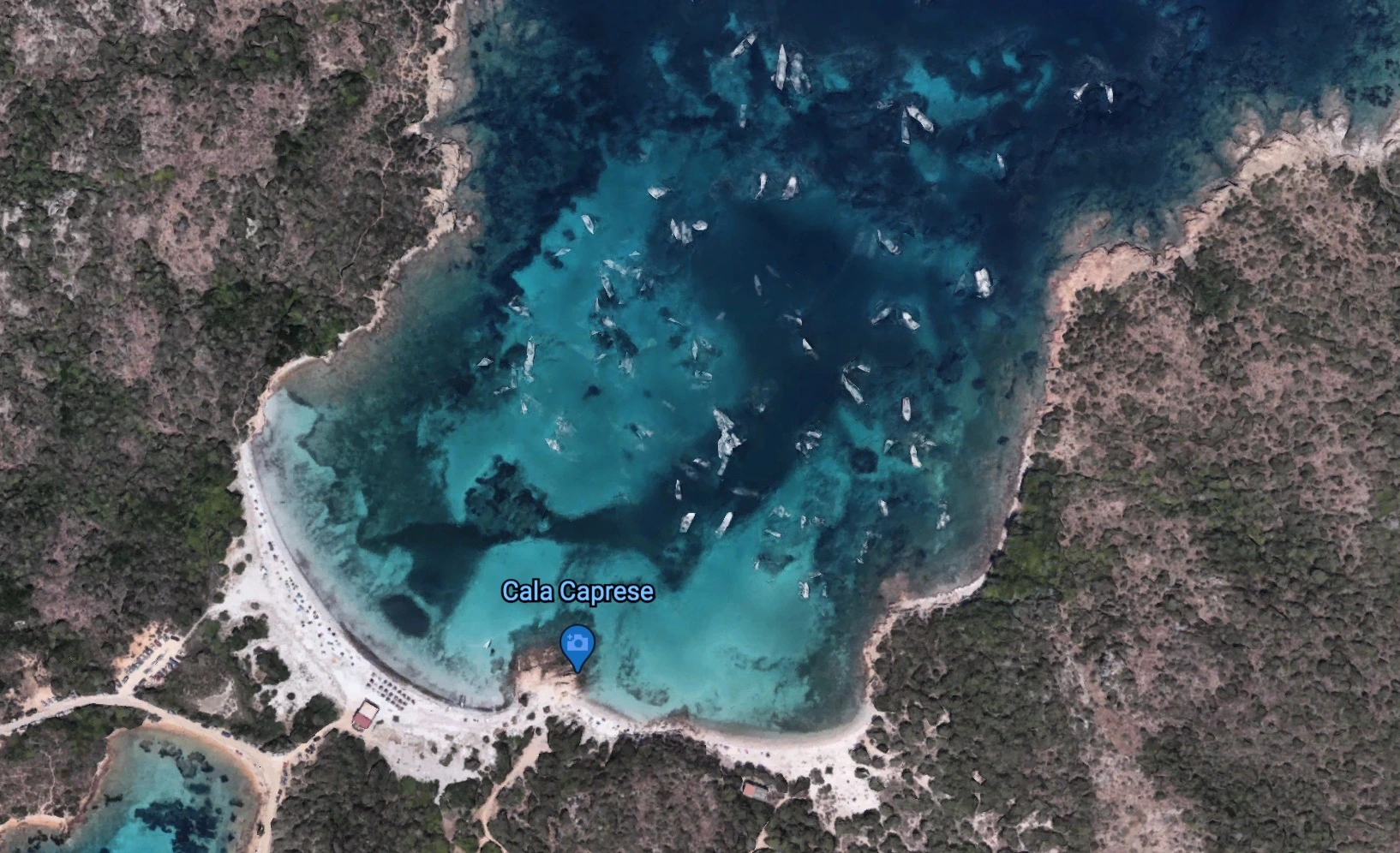
Satellite view of Cala Caprese (source: Google)
Also fantastic is the beach of the Relitto, which takes its name from the remains of an old wooden boat still visible on the beach, but the bay is closed to anchoring so the only way to reach it is by land.
Caprera has two museums worth a visit: one dedicated to Giuseppe Garibaldi and the second one is Museum of the Sea and many well-preserved historic forts with evocative landscapes.
There are fabulous trails for trekking enthusiasts, and the whole island is a beautiful nature reserve. The pine forest that stretches inland is staggeringly beautiful, and I most certainly recommend a visit.
Between Caprera and La Maddalena is the fantastic Isola di Santo Stefano (2 NM from Caprera), famous for its military base that was once in the hands of the American Navy and is now in the hands of the Italian Navy. It is forbidden to approach the eastern side of the island, where the base is located, although, at present, its activity is limited.
Particularly suggestive from both a naturalistic and cultural point of view is the Baia di Villamarina. Here you can walk among the remains of the granite quarry and see the unfinished statue of Ciano, dating back to the Second World War, as well as several forts that are still in excellent condition. The bay is also particularly sheltered from almost all winds and suitable for the roadstead. Only the Osto is particularly annoying.
The Baia del Pesce, where the former Valtour tourist village is located, is also very beautiful. It is a pity that it offers little water for sailing boats and little protection from the Ponente, the dominant wind in the Archipelago.
If the Ponente or Mistral wind is strong, be careful along with the Rada di Santo Stefano, between S. Stefano and Caprera, because the island itself with its reliefs causes sudden strong gusts that can "lie down" a sailing boat in every sense!
To enter the main port of La Maddalena, Cala Gavetta, you can take two routes: keep S.Stefano to starboard to pass in front of the islet Roma, in which case make sure to pay attention to the route of the ferries Palau-Maddalena and always give precedence; alternatively sail through the roadstead of Santo Stefano and then between Punta Sassu and the dam of the islet Chiesa, in this passage be careful because it is an old exit from the port, the green and red are reversed.
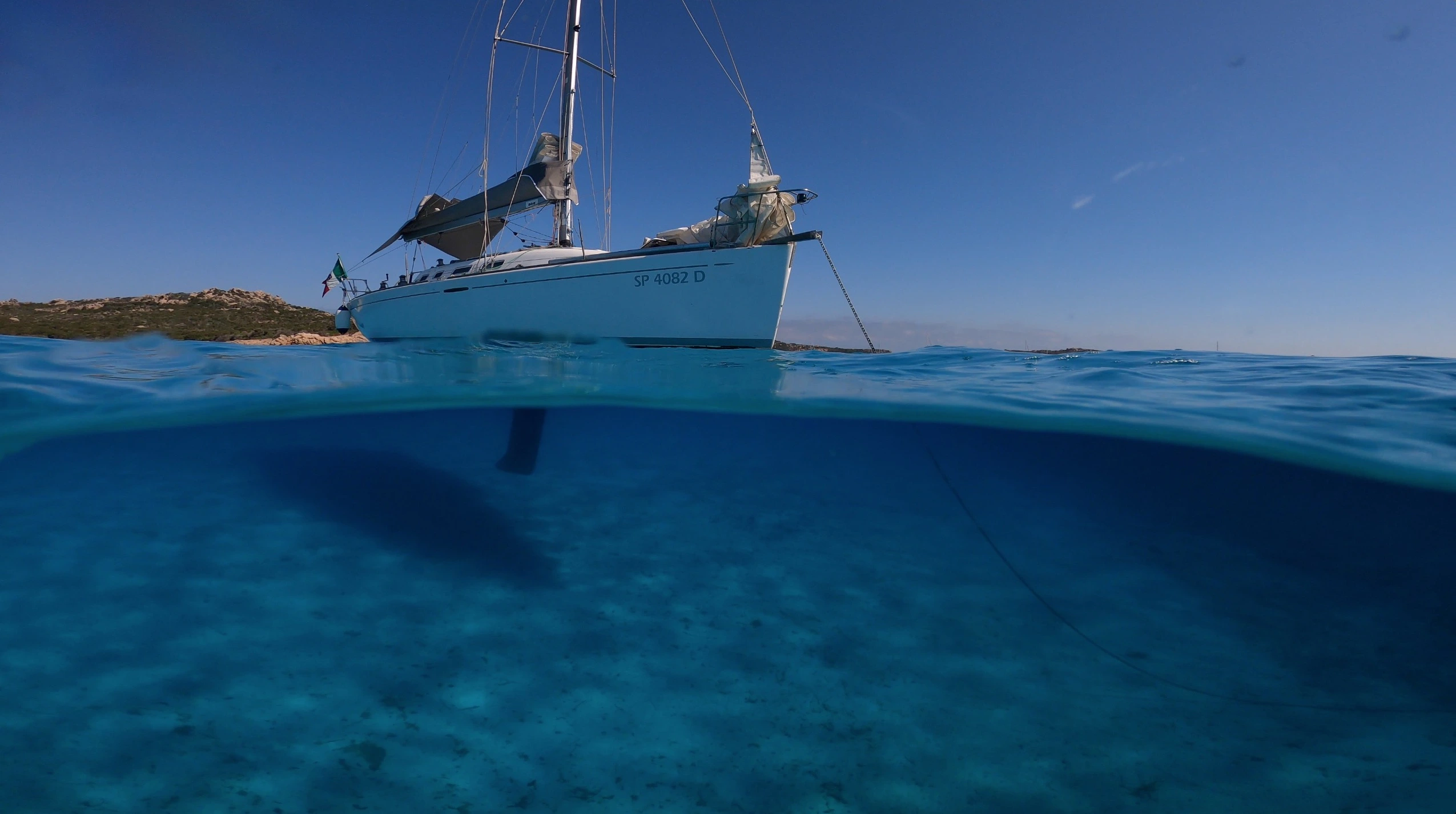
Paolo's boat anchored by the Island of La Maddalena (source: Paolo Traverso)
The Porto Turistico di Cala Gavetta is the main port of La Maddalena, just a stone's throw from the town centre. Among other things, you'll find the only marine fuel supplier in the Archipelago (the nearest alternative is Palau). Since the demand for berths is high in the summer season and the main port is not huge, you'll find several other ports and jetties near the town. These include the Marina di Cala Camiciotto, which is well-protected except for the strong Libeccio (rarer in the summer season), Zona Padule and along the main piazza Umberto Primo.
The island of La Maddalena offers many alternatives and places of interest.
The beach of Bassa Trinita, sheltered from the easterly winds, is perhaps the most famous beach on the island, with its fine dunes and turquoise water, offering a truly breathtaking sight.
But as we have said, the prevailing winds on the island are from the West, in particular Mistral and Ponente, and the bay most sheltered from these winds is certainly Spalmatore, where there is also a quay and a buoy park where you can pay and enjoy an aperitif by the sea.
The whole of the Giardinelli islet is also fantastic, with the famous "Capocchia du Purpu" beach, but be very careful, especially with significant draughts because the whole area is sown with shallows.
It is definitely worth renting an electric vehicle or a scooter to visit the island by land. The old town is very pretty, full of life and bars, as well as history and culture. The panoramic road that goes around the island offers a fantastic view of the whole Archipelago, and on a clear day, it is also possible to see the mountains of Corsica.
You should also visit the cliffs of Punta Tegge, facing West, perfect for watching the sunset and enjoying an aperitif on the sea.
The whole coastline is worth a visit, dotted with small coves with stunning colours and unique views.
Because of the numerous islands in the Archipelago, it is easy to lose your bearings. An excellent point to always take as a reference is Guardia Vecchia, a Coast Guard station located on the top of the island and visible from most inland waters.
Less than three miles from the port of Cala Gavetta, the distances to the Archipelago are relatively short...You enter the Pearls of the Archipelago. Spargi is an unspoilt island with no inhabitants, famous for its turquoise sea and fine, white sand as fine as flour.
The island's central bays are sheltered from the West but, as a result, suffer somewhat from easterly winds, apart from Cala d'Alga.
Let's start with Cala d'Alga, which I would like to point out because it is sheltered from the easterly winds and although it is usually less celebrated than its sisters, its beauty has nothing to envy from the more famous and touristy bays.
Because of the wind, the north-eastern side of the island is mainly rocky and is suitable for snorkelling, diving or perhaps for those who are not fond of sand.
On the south-eastern side of the island, we find a series of stunning beaches, the first of which is Cala Corsara, the largest and perhaps most famous bay on the island.
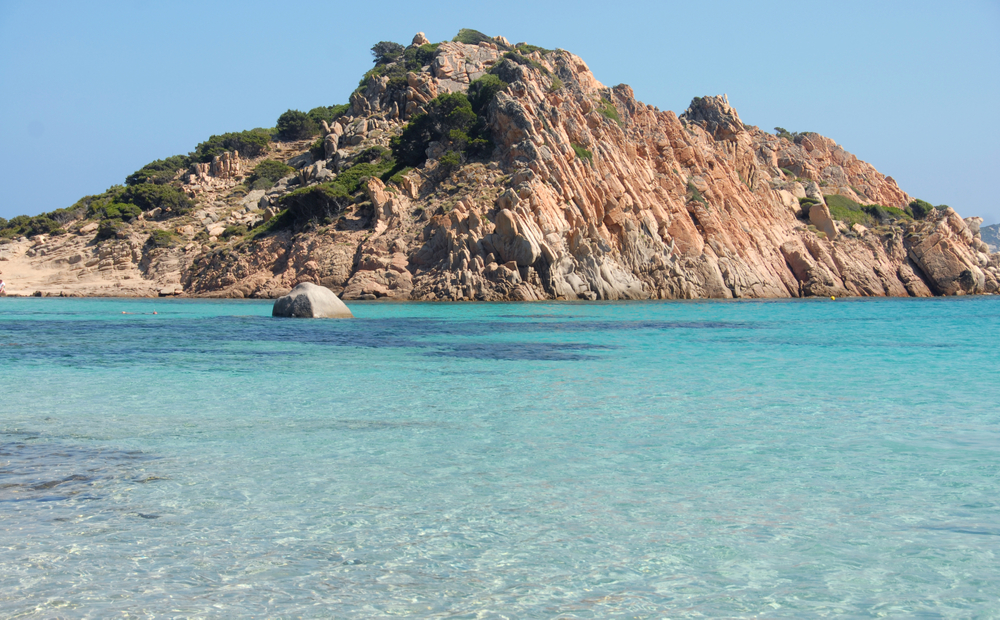
Cala Corsara is located on the island of Spargi in La Maddalena Archipelago. The four beaches are a paradise of fine sand.
It is made up of three smaller beaches, and in the central one it is possible to see and enter a Tafone, a small cave dug out of a granite rock by water erosion.
Obsidian arrowheads have been found in this bay, which testifies to the passage of man between these islands in ancient times, probably used as a bridge to reach Corsica and then Europe.
It is also famous for the rock in the shape of the Witch's head, which at sunset takes on the typical profile of a huge nose, and the Bulldog-shaped rock in the centre of the bay, from which it is also possible to dive. The central area of the bay is almost free of shallows and the seabed is sandy: I advise you to always be careful when going very close to the coast. Fantastic for snorkelling, however, we recommend caution in summer due to vehicle traffic.
Proceeding eastwards you come to Cala Soraya, two dunes of very white sand, divided by a central cliff, which is reminiscent of the tears of Princess Soraya of Persia after being abandoned by the Shah.
Watch out for the shoal in front of the cliff, while in front of the two beaches there is a fantastic sandy seabed.
The colours are breathtaking, and the view from above the dunes is almost surreal, between myrtle and ajacci.
Be careful when sailing between coves because there are so many shallows on the coast, which are sometimes difficult to spot.
We then find Cala Granara, recognisable by the small house on the beach. The island of Spargi was once inhabited, and Granara takes its name from the wheat that was once loaded onto this beach by ships.
The beach is relatively small but staggeringly beautiful. The seabed is sandy and in the case of westerly winds offers excellent protection for the night.
In succession we find Cala Connari, Cala Ferrigno, recognisable by its quay, and more hidden and smaller, Cala Bonifazzinca.
What can I say? Each of them has its own characteristics and beauties, so the advice, if possible, is always to see them all.
In order to reach the group of islands of Budelli, Razzoli and Santa Maria, leaving Spargi behind, we will have to face a stretch of sea which, although short, less than two nautical miles, can still be quite treacherous, since we lose all shelter in the event of a westerly wind, which has enough fetch to generate significant waves.
In addition, the presence of shoals that are not dangerous for navigation, but are nonetheless notable, increases this phenomenon, the Washington shoal, for example, reaches about six metres below sea level and offers among other things an excellent point of interest for those who love diving.
Budelli, Razzoli and Santa Maria are three islands very close to each other, which in their embrace form an actual natural harbour called Porto Madonna. This port is often called Le Piscine because of the colour of its waters. With the islet of Carpa in the centre, each view has its unique vibe. I recommend exploring it as much as possible, swimming or even with a canoe or tender.
The shallow water in its central part does not allow the passage of sailboats, so it is recommended to circumnavigate Budelli to visit it at 360 degrees.
There is a free field of buoys, so use the white ones because the red ones are for traffic boats. Alternatively, you can drop your anchor, always remembering to be careful of the Posidonia. Particularly suitable for roadsteads thanks to its natural protection from the wind.
Razzoli, the wildest of the three islands, is uninhabited and predominantly rocky and is home to the Razzoli lighthouse, which watches over the Bocche di Bonifacio. Budelli is undoubtedly better known to the general public for its famous Pink Beach. Also, an integral reserve, closed and protected since 1994. Many people thought that the pink colour was due to coral, although studies have shown that it is instead the remains of a microorganism that lives in Posidonia Oceanica, which deposits in the bay due to its geographical conformation, giving the sand its characteristic colour.
Behind the beach is the small house where the former beach keeper, Mauro, still lives. By sea, it is only possible to slip past it to admire it, leaving the rock of the Crocodile to the left and paying attention to the shallows under the point, by the way coming from Spargi, it is the first beach you come to on entering Porto Madonna.
You cannot swim at the bottom or in front of the red buoys marking the boundaries of the bay. Cavaliere beach, along the east coast of Budelli, is further inland and is accessible from both sides. The shallows are a real minefield of shallows, and in the event of easterly winds, it is advisable to circumnavigate Budelli and proceed, keeping Razzoli to the left, so that once you have entered the bay, you will be faced with the backdrop of Santa Maria.
Santa Maria has a lighthouse on the east side of the island, as well as a few private houses, so it's very quiet!
Worth visiting and suitable for the roadstead is Cala Santa Maria, where there are also free buoys. It is the largest beach of the three islands facing east on the opposite side of Porto Madonna. Watch out for the shoal at the entrance, marked by a red buoy, and the rocks near the quay.
The seabed is sandy and suitable for safe diving. It is worth going a mile north to admire the Presa island and to take a swim in the fantastic Muro cove.
Between the island of Santa Maria and Razzoli there is a pass, called the Asinelli, which with its shallow waters creates a series of unique colours and transparencies. Be careful because the seabed in this area is very shallow.
The geographical conformation of the Archipelago means that it is always possible to find sheltered places to protect oneself from the wind. As we have said, the prevailing winds are westerly, especially in winter, and most of the bays are well protected. As we have seen, there is no lack of shelter from the east, and the inland waters are relatively safe as the islands all around do not allow the waves to grow. Be careful, however, because the islands themselves and their reliefs often cause gusty winds and wind jumps, especially near the tips, so try to prevent these effects as much as possible.
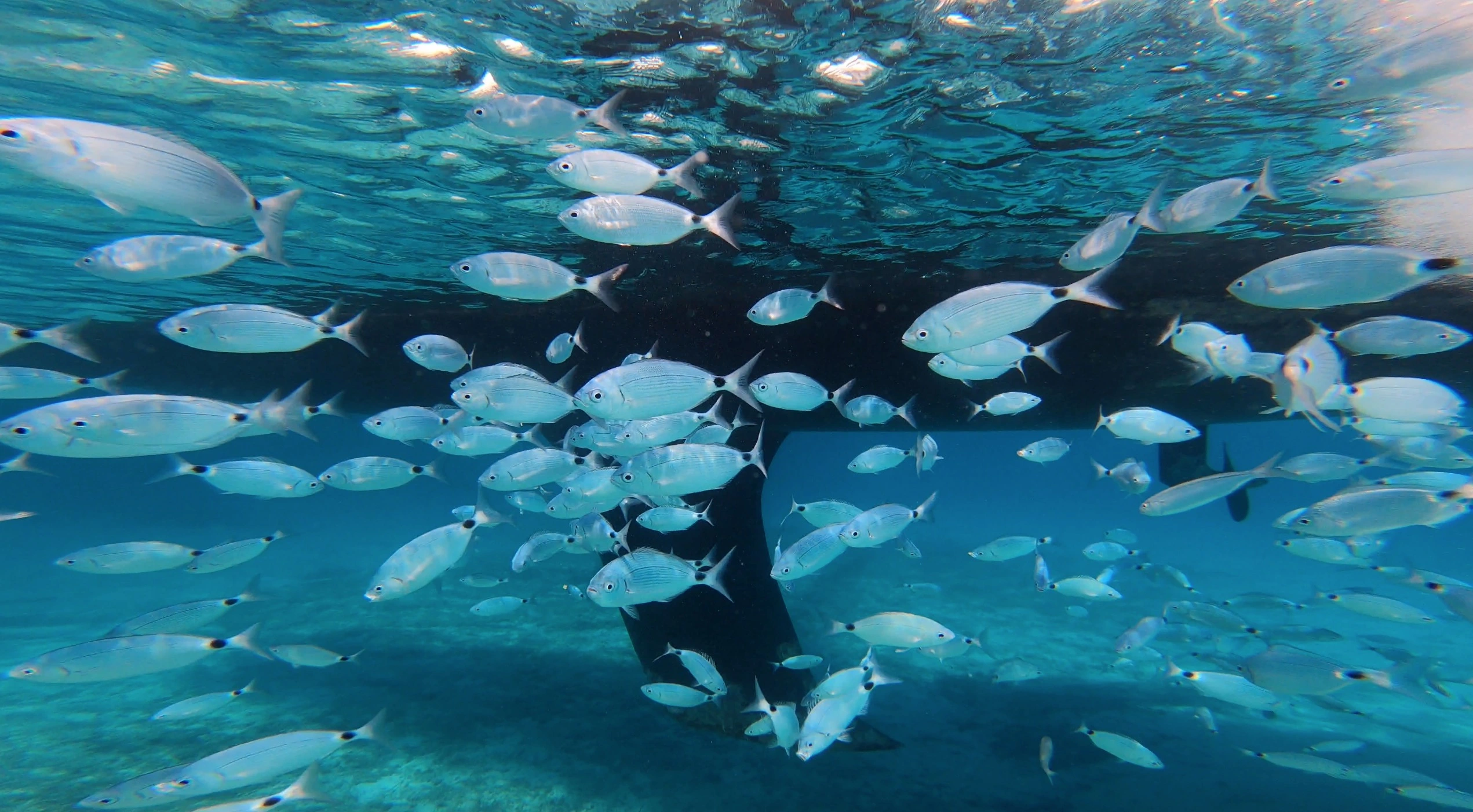
Underwater is not so bad, isn't it? (source: Paolo Traverso)
The most important ones are signposted, but when approaching the anchorage points, always proceed with the utmost caution. There are many of them, and depending on the reflection of the light, they can be challenging to spot.
The Archipelago is a paradise on earth, ready to welcome all those who are interested in visiting it, obviously with full respect for its rules and safeguarding its integrity as much as possible.
Good Wind to everyone!
"I was born in Sassari to parents from Maddalena. I've been boating since I was a child, you could say in swaddling clothes, although it was from the age of twenty onwards that I started sailing regularly and professionally. I studied economics and business but decided to change my life. I bought a sailing boat, and now I take tourists to the Archipelago. My labrador, Artemide, is (almost) never missing on board!"
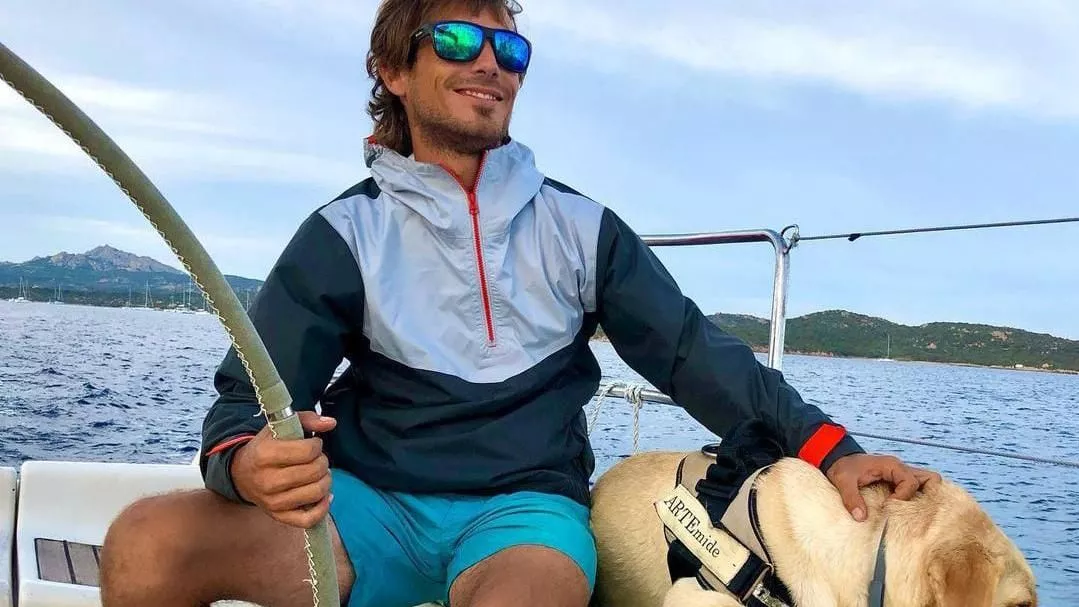
(source: Paolo Traverso)

Our regular email newsletters include information about our boats, holiday ideas, destination insights and cultural briefings. You can unsubscribe at any time and we'll treat your data with respect, never passing on your details to third parties. Find full details of our data management in our Privacy policy page
By signing up, I agree to Sailogy's T&C's and Privacy policy

Looking for inspiration for your next sailing holiday? Packed with insights on trending sailing destinations plus stories from expert sailors and first-timers, our brand new digital magazine - Magister Navis - will guide your way to your next sail.
View magazine